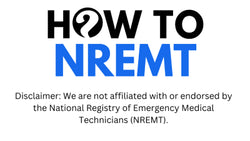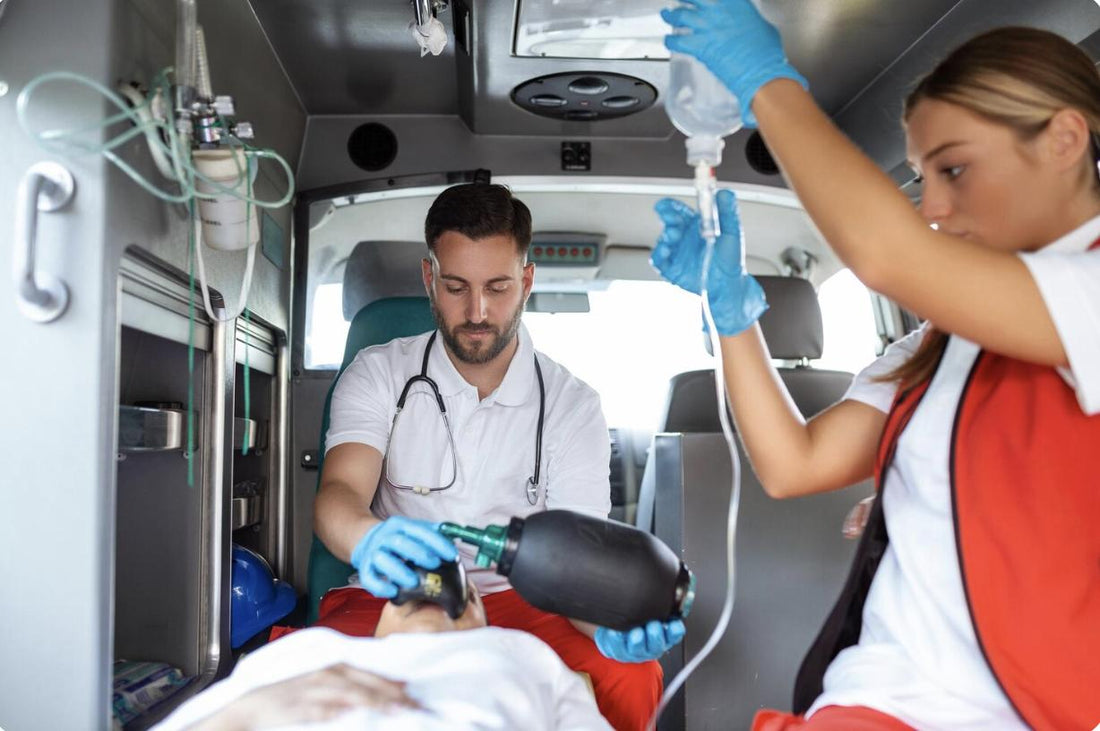For aspiring EMTs in Florida and across the nation, keeping up with the evolving emergency medical services landscape is essential for passing the NREMT exam. As of April 7, 2025, the NREMT has introduced updated BLS certification examination content domains for both EMRs and EMTs. This shift signifies a refined focus on real-world patient care scenarios, moving beyond the traditional categorical breakdown to a more integrated, assessment-focused approach.
If you're an EMT candidate in Florida preparing for your NREMT cognitive exam, understanding these new domains is paramount. This power blog will break down the updated BLS content areas, explain their implications for your study strategy, and provide actionable advice to help you align your preparation with the NREMT's latest expectations.
Understanding the New BLS Content Domains
The new BLS content domains for EMR and EMT exams, effective April 7, 2025, are:
1. Scene Size-Up and Safety (15% - 19% for EMTs)
2. Primary Assessment (39% – 43% for EMTs)
3. Secondary Assessment (5% - 9% for EMTs)
4. Patient Treatment and Transport (20% - 24% for EMTs)
5. Operations (10% - 14% for EMTs)
Let's understand what each of these domains encompasses and how they reshape your study focus.
1. Scene Size-Up and Safety
This domain emphasizes the foundational steps of any emergency response: ensuring safety and understanding the environment. It covers assessing the scene for hazards (e.g., traffic, active violence, electrical, chemical), ensuring the safety of yourself, your crew, the patient, and bystanders, and determining the mechanism of injury or nature of illness.
How to Master It: You’re not memorizing a checklist; you’re applying critical thinking to potential dangers. You need to be able to identify immediate threats, prioritize safety, and understand how the environment might influence patient presentation or care. Think about situational awareness, proper PPE, and quick decision-making under pressure. Questions here will test your ability to initiate a safe and effective response.
2. Primary Assessment

This is the largest domain, representing nearly half of the EMT exam. It focuses on the rapid, initial assessment of a patient's life-threatening conditions. This includes forming a general impression, assessing mental status (AVPU), and rapidly evaluating the patient's airway, breathing, and circulation (ABC). It also covers identifying and managing critical issues found during this initial sweep, such as severe bleeding.
How to Master It: This domain demands a deep understanding of priorities. You must be able to quickly identify and intervene in immediate life threats. Focus on the nuances of airway management, assessing respiratory effort and quality, identifying signs of shock, and initiating immediate interventions like hemorrhage control.
Practice scenario-based questions that require you to prioritize actions based on a patient's initial presentation. Remember, pediatric patient care is integrated throughout all domains, so consider age-appropriate primary assessment techniques.
3. Secondary Assessment
Following the primary assessment and management of immediate life threats, the secondary assessment involves a more detailed, systematic evaluation. This includes obtaining a thorough patient history (SAMPLE, OPQRST), performing a comprehensive physical exam (focused or head-to-toe based on mechanism/nature), and gathering vital signs.
How to Master It: While smaller in percentage, this domain tests your ability to conduct a methodical and complete patient assessment. Focus on effective communication skills for obtaining patient history, knowing what to look for during a physical exam (e.g., DCAP-BTLS, lung sounds), and interpreting vital signs. Understand how different findings correlate with various medical and traumatic conditions.
4. Patient Treatment and Transport
This domain covers the interventions provided to the patient based on your assessment findings, as well as preparing for and executing transport. This includes topics like splinting fractures, administering oxygen, wound care, medication administration (within EMT scope, e.g., aspirin, epinephrine auto-injector, oral glucose), and proper patient packaging and moving techniques. It also includes the decision-making process for transport priority and destination.
How to Master It: This is where your knowledge of interventions comes into play. You need to know what intervention is appropriate for which condition, and how to perform it safely and effectively. Focus on the indications, contraindications, dosages, and routes for medications within your scope.
Understand the principles of immobilization, bleeding control, and basic resuscitation techniques. Practice scenarios that require you to select and apply the correct treatment based on a given patient presentation.
5. Operations
This domain encompasses the broader aspects of EMS operations, extending beyond direct patient contact. It includes topics such as communication with dispatch and other healthcare providers, maintaining EMS equipment and inventory, legal and ethical considerations, documentation, maintaining readiness of the ambulance, and understanding the role of EMS in public health and disaster response.
How to Master It: This section tests your understanding of the "big picture" of EMS. Focus on proper radio communication, documentation standards (e.g., PCR components), legal issues like consent and patient confidentiality (HIPAA), and ethical dilemmas you might face.
Review vehicle maintenance, equipment checks, and incident command principles. This domain ensures you understand your role within the larger EMS system.
Your Blueprint for NREMT Success

The updated NREMT BLS content domains for EMTs reflect a crucial evolution in emergency medical education, emphasizing practical application and integrated patient assessment. For new exam takers in Florida, this shift means your study strategy must be equally adaptive.
At How To NREMT, we understand the journey to becoming a certified EMT is challenging, but with the right tools and approach, it's entirely achievable. Our comprehensive resources, including our detailed 10-step training plan, extensive practice app for iPhone and Android, NREMT exam simulator, and unlimited live group coaching sessions, are specifically designed to align with these new NREMT standards and empower you to confidently demonstrate your readiness.
Our dedicated EMT tutors are here to guide you through every new domain, ensuring you not only understand the content but can critically apply it to real-world patient care.
For an even more focused and intensive boost to your preparation, consider joining one of our upcoming NREMT Exam Prep 7- or 14-day boot camps. These one-of-a-kind virtual sessions, held daily for 2-3 hours via Zoom, offer expert coaching and strategic insights.
Take the next step towards your career today.

